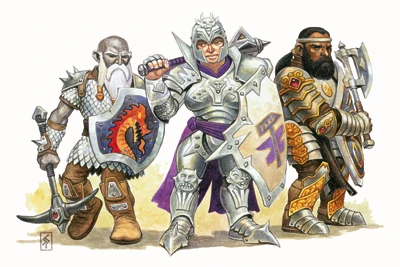Though they interact with the Paragons differently, all three dwarf-kin races recognize them as the eldest of their kind. Eight paragons are universally recognized by all three races--these are the paragons presented in "Priests of Monvesia." They are known by their dwarven names, which is the eldest of the dwarf-kin languages. The variation in epithets demonstrate how the culture of each race compares to those of its kin: caste dwarves, traveler gnomes, and nomadic neanderthals.
- Materialist Paragons
- Mosamartle
- the Magistrate [dwarf high caste]
- the Lawgiver [gnomes & neanderthals]
- Meomari
- the Warrior [dwarf High Caste]
- the Defender [gnomes & neanderthals]
- Khelosani
- the Artisan [dwarf Middle Caste & gnomes]
- the Smith [neanderthals]
- Meshakhte
- the Miner [dwarf Low Caste & gnomes]
- the Mason [neanderthals]
- Idealist Paragons
- Mekare
- the Archivist [dwarf Middle Caste]
- the Storyteller [gnomes and neanderthals]
- Vachari
- the Merchant [dwarf Middle Caste & gnomes]
- the Trader [neanderthals]
- Vitalist Paragons
- Msakhuri
- the Servant [dwarf Low Caste]
- the Homemaker [gnomes]
- the Fire-Tender [neanderthals]
- Vaeltava
- the Casteless [Casteless dwarves]
- the Wanderer [gnomes]
- the Scout [neanderthals]
